Metals and Non Metals Class 8 Science Chapter 4 as per NCERT Book used in CBSE and other Schools. The lesson covers the complete explanation of class 8 Chapter 4 Metals and Non Metals. Topics covered are Introduction to metals, physical and chemical properties of metals. Introduction to non metals, physical and chemical properties of non metals have also been covered. The lesson also covers corrosion and methods to prevent corrosion. The lesson covers all important questions based on Metals and Non Metals. NCERT solutions to book questions have also been provided for ease to the students.

There are variety of substances found in nature. These can be categorized into two parts:
- Natural substances
- Artificial or man-made substances
Natural substances: These are those substances which are found naturally. For example: coal and petroleum.
Natural substances are further divided into two types:
- Metals
- Non-metals
See Video:
Artificial substances: These are those substances which are not found in nature or are made artificially by man. For example: chair, table, tube light etc.
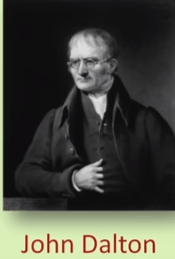
Matter: Anything that occupies space and has mass (quantity of matter, For example: Pen and ball) is called matter.
John Dalton: He gave Dalton’s theory in which he clearly stated that matter is made of small particles called atoms.
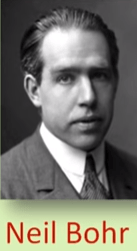
Neil Bohr Theory: An atom is spherical in nature and has a nucleus placed at the center of the atom. Atoms are electrically neutral.
He stated that an atom has three fundamental particles as follows-
Electrons
Protons
Neutrons
Electrons are positively charged.
Protons are negatively charged.
Neutrons are not charged.
In an atom, there is only one nucleus which is placed in the center.
Valence orbit/shell: The outermost shell of an atom is known as valence shell.
Valence electrons: The electrons which are present in the outermost shell.
Valency: Valency is used when one atom combines with another atom. Valency totally depends upon the valence electrons.
Valence electrons in metals and non metals are as follows-
| Metals | Non metals |
| These substances have 1, 2, or 3 valence electrons. | These substances have 4, 5, or 7 valence electrons. |
| They always have loose electrons. | They always gain electrons |
| They have positive valencies | They have negative valencies |
For example: Whenever a metal and non-metal combine, they form a substance by interchanging their valencies.
Mg2+ + Cl- → MgCl2
Magnesium Chloride Magnesium chloride
Introduction to Metals
What are Metals
Those materials which possess the characteristic of being hard, shiny, malleable, fusible, ductile, etc. are termed as metals. Few examples of metals are iron, gold, silver, aluminium, copper, etc.
Physical Properties of Metals
These are the properties which we come to know by just touching, seeing, color, etc.
1. Malleable: It is that property of metals which allows them to be beaten into the thin sheets. Due to presence of this property, the shape of iron nail and aluminium wire can be changed on beating.
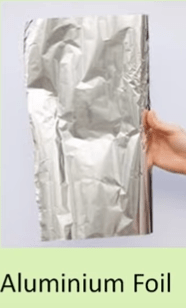 For example: The silver foils used for decorating sweets and the aluminium foil used for wrapping food. Malleable metals are aluminium and copper. Highly malleable metals are gold and silver.
For example: The silver foils used for decorating sweets and the aluminium foil used for wrapping food. Malleable metals are aluminium and copper. Highly malleable metals are gold and silver.
| Malleable | Highly Malleable |
| Aluminium(Al) | Gold (Au) |
| Copper (Cu) | Silver (Ag) |
2. Conductivity: It is that property of metals which allows the current and heat to pass through them easily.
For Example- Metals like iron rod, nail, copper wire, etc. are good conductors of electricity
 3. Ductility: It is that property of metals which allows them to be drawn into the wires.
3. Ductility: It is that property of metals which allows them to be drawn into the wires.
For example: Metals like aluminium and copper are used to make wires which are used in electric connection as they are ductile metals. Zinc, Arsenic, and antimony are non-ductile metals.

| Ductily | Non -Ductile |
| Copper(Cu) | Zinc (Zn) |
| Aluminium (Al) | Arsenic (AS) |
| Gold (Au) | Antimony (sb) |
| Silver (Ag) |
4. Sonorous: It is that property of metals which produces ringing sounds on hitting. Ringing property of metal depends on the temperature and density.
Q. Why are bells made of metals?
Answer: Metals have sonorous property. Ringing sound produced by metals is known as sonority. So, bells are made of metals.
5. Lustrous: It is that property of metals which makes them shine and their structures are capable of reflecting incident light.
For example: Gold, silver, copper, and platinum.
Metals like sodium and potassium are soft and can be cut with a knife.
6. Hardness: Due to the ductility and malleability properties, metals are very strong and some of the metals which have the properties of non ductile and non malleable are not all strong.
 7. Solid at room temperature: Most of the metals are solid (particles are tightly and very closely packed) at room temperature.
7. Solid at room temperature: Most of the metals are solid (particles are tightly and very closely packed) at room temperature.
There are a few exceptions.
Mercury and Gallium are the metals which are found in liquid state at room temperature.
8. High Melting and boiling point: Most of the metals have high melting and boiling points. The metals which are solid in nature always have high melting and boiling points because they are closely packed and have high attraction.
There are few exceptions.
Sodium, potassium, Mercury, and Gallium have low melting and boiling points.
9. High tensile strength: The metals which can bear the strain are termed as the high tensile strength metals.
Here are few exceptions
Zinc, Arsenic, and Antimony have low tensile strength.
Chemical Properties of Metals
1. Reaction of Metals with Oxygen: Generally, when metals are reacted with oxygen, they will form metallic oxides. These metallic oxides are basic in nature.
Example 1: Rusting of Iron. Following is the reaction to express it.
Iron (Fe) + Oxygen (O2) + Water (H2O) → Iron Oxide (Fe2O3)
Example 2:
2Cu + H2O + CO2 + O2→ Cu (OH)2 (copper hydroxide) + CuCO3 (copper carbonate)
Testing of nature of Rusting-
Follow the given steps-
(i) Collect a spoonful of rust and dissolve it in a very little amount of water.
(ii) The rust remains suspended in water. Shake the suspension well.
(iii) Test the solution with red and blue litmus papers. The red litmus turns blue.
So, we imply that, generally, metallic oxides are basic in nature.
2. Reaction of Metals with Water: Some metals react vigorously with water like in case of sodium. It is stored in kerosene oil.
Some metals react with water to form metal oxides and metal hydroxides. Hydrogen gas is released in this reaction.
On the other hand, some metals react very slowly with water like in case of iron.
For example:
Na + H2O → NaOH + H2
Sodium + water → Sodium hydroxide
M + H2O → Mg(OH)2 + H2
Ca + H2O → Ca(OH)2 + H2
Calcium + Water → Calcium hydroxide
Some metals react with cold water, some with hot water, and some metals react with steam. Metals which react with cold water are more stable as their hydroxides are stable.
For example: Potassium, Sodium, and Calcium.
K + H2O → KOH + H2
Na + H2O → NaOH + H2
Some metals react with hot water and form oxides. For example: Magnesium.
Mg + H20 → MgO + H2
Magnesium Water Magnesium oxide
Some metals react with steam.
For example: Aluminium, Iron, and Zinc.
Fe + H2O → Al2O3 + H2
Iron (Steam)
Zn + H2O → ZnO + H2
Al + H2O → Al2O3 + H2
Cu + H2O → No reaction
Tendency to react with water
The tendency of metals to react with water is as follows –
K> Na > Ca > Mg > Al > Zn > Fe > Cu
More reactive > > not reactive.
3. Reaction of Metals with Dilute Acids:
Generally, a metal reacts with acids and releases hydrogen gas with a ‘pop’ sound.
The presence of hydrogen gas is confirmed by bringing a burning matchstick or candle near the gas. And when the burning matchstick or candle produces pop sound then it means that hydrogen gas has evolved.
For example:
Na + HCl → NaCl (Sodium chloride) + H2
Mg + H2SO4 → MgSO4 ( Magnesium Sulphate) + H2
Ca + HNO3 → Ca(NO3)2 ( Calcium nitrate) + H2
It is found that, copper does not react with hydrochloric acid while it reacts with sulphuric acid.
Cu (less reactive) + HCL (more reactive) → No reaction
Cu + HOH → No reaction
Copper does not react with diluted acids and water. As copper is less reactive than HCl.
4. Reaction of metals with metals salt solution:
When salt of metal B reacts with metal A:
Salt of metal B + Metal A → Salt of metal A + Metal
For example:
CuSO4(Blue color) + Zn (more reactive) → ZnSO4( colorless) + Cu
The five important uses of metals are as follows –
(i) Lead is used in X-ray machines.
(ii) Iron is used in construction.
(iii) Mercury is used in thermometers.
(iv) Gold and silver are used in making jewellery.
(v) Aluminium foil is used for packing food.
Q. Now the question arises what are noble metals?
Answer: Noble metals are those metals which are not reactive while some are less reactive. There are certain metals that do not react with oxygen, water, moisture or even any of the dilute acids. We can imply that they are very unreactive. For example: gold and platinum.
Introduction to Non-Metals
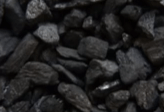 What are Non-Metals
What are Non-Metals
Those materials which do not possess the characteristics of metals are termed as non-metal.
Materials like coal and sulphur are soft and dull in appearance. They break down into powdery mass on tapping with hammer. They are non-sonorous and are poor conductors of heat and electricity.
Few examples of non metals are sulphur, carbon, oxygen etc.
The important physical properties of non-metals are discussed below:
Physical Properties of Non-Metals
-
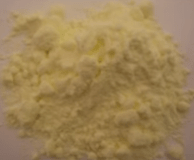 Non-Malleable: Non-metals are generally brittle and hence cannot be beaten into sheets or drawn into wires. In other words, non-metals are non-malleable and non-ductile. Where stress is applied on non-metals, they shatter into pieces.
Non-Malleable: Non-metals are generally brittle and hence cannot be beaten into sheets or drawn into wires. In other words, non-metals are non-malleable and non-ductile. Where stress is applied on non-metals, they shatter into pieces.
For example: Sulphur and phosphorous. These non-metals are in the form of powder and cannot be beaten.
- Non-Ductile: Non metals are non-ductile because they cannot be melted and drawn into thin wires. They are brittle in nature.
- Poor conductors of heat and electricity: Non-metals are generally bad conductors of heat and electricity as they do not have free electrons. Carbon (graphite) is an exception. Graphite is an allotrope of carbon as it is a good conductor of electricity due to its special crystalline arrangement. It is used in making electrodes.
- Non-sonorous: Non-metals which do not make any sound when hit with an object are known as non-sonorous. For example: Phosphorous.
- Non-Lustrous: These are the non-metals which are in the form of powder and gas. Hence, they cannot be polished and do not have any lusture.
Non-metals are generally non-lustrous and dull. Carbon (graphite) and iodine are exceptions. They are lustrous, as their surface possesses a shine.
- Softness: Non-metals are generally soft. Due to non-ductile and non-malleability properties, non metals are not strong at all.
However, carbon (diamond) is an exception. Diamond is very hard. In fact, diamond is the hardest natural substance known.
- Solid, Liquid or Gas at room temperature: Non-metals may exist in solid, liquid or gaseous state at room temperature. For example, carbon, sulphur and phosphorus are solid at room temperature. Nitrogen and oxygen are gaseous non-metals. Bromine is a non-metal which is liquid at room temperature.
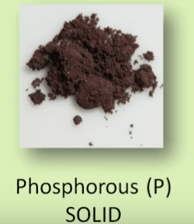
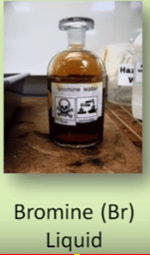
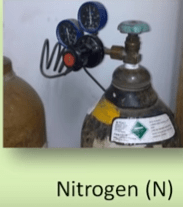
- Low Melting and boiling point: Non-metals are loosely packed and therefore, less heat is required to melt or boil them. Hence, non-metals possess low melting and boiling points, except graphite.
Carbon (graphite) is a non-metal but possesses high melting point.
- Low Tensile Strength: Non-metals cannot bear the strain. Thus, they have low tensile strength. They are not strong and get easily broken.
Chemical Properties of Non-Metals
1. Reaction with oxygen: Oxides of non-metals are formed when non-metals react with oxygen. The oxides of non-metals are acidic in nature and turn blue litmus to red or neutral.
C + O2 → CO2 (carbon dioxide, which is an acidic oxide)
When sulfur reacts with oxygen, we get sulfur dioxide.
S + O2 → SO2
When sulfur dioxide reacts with water it forms sulphurous acid.
SO2 + H2O → H2SO3
2. Reaction with water: Non-metals do not react with water but are usually very reactive in air, which is why some of them are stored in water.
For example, one of the highly reactive non-metals is phosphorus and it catches fire when exposed to air that is why it is stored in water to prevent its contact with atmospheric oxygen.
These non-metals do not have sufficient electrons to reduce hydrogen.
N.M + HOH → No reaction (non-metals do not displace or reduce hydrogen).
C + H2O → No reaction
3. Reaction with acids: None of the non-metals are known to react with acids.
C + H2SO4 → No reaction
4. Reaction with bases: The reaction between non-metals and bases is a very complex one. Reaction of chlorine with bases like sodium hydroxide gives products like sodium hypochlorite as well as water.
The five important uses of non metals are:
(i) Sulphur is used in vulcanization of rubber, which makes rubber sufficiently hard to produce tyres.
(ii) Phosphorus is used in making phosphatic fertilizers.
(iii) Graphite is used in making lead of pencils.
(iv) Hydrogen can be used as a fuel that will be a non polluting option for fuel.
(v) Chlorine is added to water for purification purpose.
Q: State whether the following statements are True/False.
- The property of metals by virtue of which they can be drawn into wires is called ductility.
- Metals are good conductors of electricity but poor conductor of heat.
- Articles made up of metals produce ringing sound when struck hard.
- Oxides of non-metals and metals are acidic in nature.
- A less reactive metal displaces a more reactive metal from its salt solution in water.
Answer.
- True
- False. metals are good conductors of heat and electricity.
- True because metals are sonorous.
- False. oxides of non-metals are acidic in nature and oxides of metals are basic in nature.
- False, a more reactive metal displaces a less reactive metal from its salt solution in water.
Corrosion
Corrosion is an oxidation reaction with atmospheric oxygen in the presence of water on the surface of a metal. During corrosion, metals get converted to oxides, hydroxides, sulphides, etc.
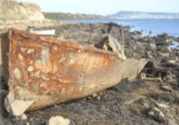 Generally corrosion occurs when most or all of the atoms on the same metal surface are oxidized, damaging the entire surface. Most metals are easily oxidized and they tend to lose electrons to oxygen in the air or in water. As oxygen is reduced (gains electrons), it forms an oxide with the metal. Corrosion is a dangerous and extremely costly problem. Because of it, buildings and bridges can collapse, oil pipelines break, chemical plants leak, and bathrooms flood.
Generally corrosion occurs when most or all of the atoms on the same metal surface are oxidized, damaging the entire surface. Most metals are easily oxidized and they tend to lose electrons to oxygen in the air or in water. As oxygen is reduced (gains electrons), it forms an oxide with the metal. Corrosion is a dangerous and extremely costly problem. Because of it, buildings and bridges can collapse, oil pipelines break, chemical plants leak, and bathrooms flood.
The corrosion of iron is called rusting.
The Conditions necessary for Rusting are as follows-
- Moisture
- Air
For example:
Fe + O2 → Fe2O3 (Rust which is brown in color) + H2O
Prevention of Corrosion (Rusting)
The steps involved in the prevention of corrosion are:
Painting
Greasing
Electroplating
Galvanization
Alloying
Let us discuss them one by one-
1. Painting: Coating a metal surface with paint or enamel provides a barrier between the metal and the moisture in the environment. For example: Railway coaches, automobiles, aircraft.
The process of coating a metal surface with another metal that is more likely to be oxidized is referred to as sacrificial coating.
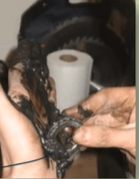 2. Greasing: The application of greasing on metal surfaces is helpful in preventing the contact of the metal surface with air and moisture to prevent its corrosion. For example: Lubricating bicycle parts with grease to reduce friction and prevent corrosion.
2. Greasing: The application of greasing on metal surfaces is helpful in preventing the contact of the metal surface with air and moisture to prevent its corrosion. For example: Lubricating bicycle parts with grease to reduce friction and prevent corrosion.
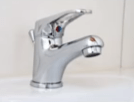 3. Electroplating: It is the process of coating a thin layer of metal over the other alignment by hydrolysis. This process not only helps to prevent corrosion, but also makes the metallic surface shiny.
3. Electroplating: It is the process of coating a thin layer of metal over the other alignment by hydrolysis. This process not only helps to prevent corrosion, but also makes the metallic surface shiny.
For example: Iron is electroplated with copper or chromium to prevent rusting. Also, taps and door knobs are electroplated. Electroplating is widely used in industries such as automobile, airplanes, electronics, jewelry, and toys. Electroplating is helpful for manufacturers to utilize inexpensive metals such as steel or zinc for the majority of the products and then apply different metals on the outside to account for appearance, protection, and other properties that are desired for the product.
There are also specific types of electroplating such as copper plating, silver plating, and chromium plating.
4. Galvanization: It is the process of applying a protective thin layer of Zinc to steel or iron in order to prevent rust and corrosion.
As Zinc prevents iron from corrosion because it does not allow air to pass through it and form Zinc oxide, Zinc oxide is impermeable in nature.
Zn + O2 → ZnO( Zinc oxide)
Rust is iron oxide (typically a red oxide) which is formed in the presence of water or air moisture by the reduction and oxidation reaction of iron and oxygen.
Q: What is other metal except iron which gets rusted?
Answer: Copper is another metal, other than iron which gets rusted in moist air. It acquires a dull green coating. In the presence of carbon dioxide and water, copper gets corroded or rusted to form a green coating. This green coating is a mixture of copper hydroxide and copper carbonate.
Q: Why are Aluminium and Zinc known as self protecting metals?
Answer: Aluminium and Zinc are self protecting metals because when they come in contact with air, they form their respective oxides that form an impermeable layer on their surface which prevents further attack on the metal by air.
Al + O2 → Al2O3
Zn + O2 → ZnO ( Zinc oxide is impermeable and does not allow air to enter)
Q: Explain the reaction of non metals with oxygen with the help of an activity?
Answer: For this, we need to take powdered sulphur in spoon and then heat it. When sulphur starts burning, put a spoon into a glass tumbler with a lid to ensure that the produced gas does not escape. Then add some water into the tumbler and replace the lid quickly. Now, shake the solution well and test it with the red and blue litmus papers. We will observe that color of blue litmus will change into red. Hence, we can say that non metal oxides are acidic in nature.
Q: What happens when magnesium ribbon is heated in presence of air?
Answer: Magnesium ribbon when heated on burner flame in the presence of air, starts burning after some time with a white flame. At the end, white powder is formed which is called magnesium oxide.
Mg + O2 → MgO
Q: What is the difference between chemical properties of metals and non metals?
| Metals | Non metals |
| Metals react with oxygen and form oxides. These oxides are alkaline in nature. | Non metals react with oxygen to form oxides which are alkaline in nature. |
| Metals react with water to form oxides and hydroxides. | They do not react with water. |
| Metals react with acid to produce hydrogen gas. | Non metals do not react with acid. |
| More reactive metals can displace less reactive metals from their salt solutions. | They cannot displace less reactive metals from their salt solution. |
| Metals are good conductors of heat and electricity. | Non metals are poor conductors of heat and electricity. Like Graphite. |
| Metals have high density. | Non metals have low density. |
5. Alloying: An alloy is a metal that is combined with other substances to create a new metal. For example: the alloy can be stronger, harder, tougher, or more malleable than the original metal.
The predominant metal in the alloy is called the base metal. The other metals or elements added to the alloy are called alloying elements.
Characteristics of alloying:
It improves the property of substance.
It makes the metal more durable.
It makes the metal corrosion resistant.
Constituents, Properties and Uses of some Alloys
| Alloy | Constituents | Properties | Uses |
| Alnico | It contains Aluminium, Nickel, cobalt | Permanent Magnet | It is used for making permanent magnets |
| Brass | It contains Copper, Zinc | Corrosion resistant, Hard | It is used for making utensils etc. |
| Bell Metal | It contains Copper, Tin | Sonorous, Hard | It is used for making bells, Gongs |
| German Silver
|
It contains Copper, nickel, Zinc | Silver Appearance | It is used for making coins etc.
|
| Duralumin
|
It contains Aluminium, Copper, Magnesium | Strong and Light
|
For making vehicles etc.
|
| Steel | It contains Iron, Carbon | Very hard and strong | It is used for making bridges, ships etc. |
| Solder | It contains Tin, Antimony | Alloy with low melting point | It is used for joining metal parts |
| Bronze | It contains Copper, Tin | Corrosion resistant, Hard | It is used for making statues, coins etc. |
Steel is formed from iron and carbon.
Iron is a brittle metal, so it is not suitable for use as a building material for constructing bridges and buildings. Steel is an ideal construction material.
Stainless steel, an alloy which is made from iron and chromium.
It is more resistant to corrosion and staining when it comes in contact with water as opposed to iron and carbon steel.
Aluminum is soft and relatively weak. Its strength is increased by adding other elements, including zinc, copper, magnesium, and manganese. When aluminum contains added elements, it is known as an aluminum alloy.
Time to check your knowledge by answering the following questions-
- Which metal is liquid at room temperature other than mercury?
Answer: Gallium - Which non metal is lustrous and shiny?
Answer: Iodine - Which non metal is a good conductor of Electricity?
Answer: Graphite - What are the names of metals that can be cut with Knife?
Answer: Sodium, Potassium, Lithium.
5.Write the name of metals which have very low melting and boiling point?
Answer: Gallium and Cesium.
- A reaction in which more reactive metal displaces less reactive metal from its salt solution?
Answer: Displacement reaction - What is the name of non metal which is liquid at room temperature?
Answer: Bromine - Which is the name of the hardest element known to mankind?
Answer: Diamond - What is the name of the metal oxides which show both basic and acidic nature?
Answer: Amphoteric oxides (Aluminium oxide, Zinc Oxide) - Where is Sulphur stored?
Answer: in Water - Where are Sodium and Potassium usually kept?
Answer: in Kerosene oil - What are the name of elements which show properties of both metals and non metals?
Answer: Metalloids - What is the name of the compound formed by transforming electrons from metals to non metals?
Answer: Ionic Compound - What is the process or damage caused to metals due to the reaction of metals with oxygen, moisture, carbon dioxide etc ?
Answer: Corrosion - Pencil lead is made up of which non metal?
Answer: Graphite
Multiple Choice Questions
Chosse the correct answer out of the given options-
Question: Which of the following is a more reactive metal?
(a)Iron (b)Zinc (c)Gold (d)Potassium
Answer: (d) Potassium
Question: Which of the following is not a metal?
(a) Copper (b) Sulphur (c) Aluminium (d) Iron
Answer: (b) Sulphur. Copper, aluminium and iron are metals but sulphur is not a metal.
Question: What is the name of the substance that will be flattened on beating with a hammer?
(a) crystal of iodine (b) lump of sulphur
(c) piece of coal 4 (d) zinc granule
Answer. (d) Zinc granule. Metals can be beaten into thin sheets with a hammer. Non-metals break into small pieces when hammered. So, zinc granule will be flattened on beating with a hammer.
Question: Which of the following is non-metal?
(a) Iron nail (b) Aluminium wire
(c) Copper plate (d) Piece of coal
Answer: (d) Piece of coal is a non-metal as it can be broken into small pieces when hammered.
Question: Which of the following is not a ductile material?
(a) Silver (b) Copper (c) Sulphur (d) Aluminium
Answer: (c) Sulphur. Ductility is a characteristic property of metals. Sulphur is a non-metal, so it is not ductile. When sulphur is stretched, it breaks into pieces and does not form wires.
Question: Which of the following metals is an exception and can be cut with a knife?
(a) Iron (b) Sodium (c) Gold (d) Magnesium
Answer: (b) Sodium. Metals are generally hard. This means that most of the metals cannot be cut easily. But sodium is soft and can be easily cut with a knife.
Question: Metals are generally solid. Which of the following metals is in the liquid state at room temperature?
(a) Mercury (b) Silver (c) Aluminium (d) Sodium
Answer (a) Mercury metal is in liquid state at room temperature.
Question: Which one of the following metals does not react with dilute hydrochloric acid?
(a) Magnesium (b) Aluminium (c) Iron (d) Copper
Answer: (d) Copper. The less reactive metals like copper, silver and gold do not react with dilute hydrochloric acid to produce hydrogen gas.
Question: Which of the following reacts with cold water vigorously?
(a) Carbon (b) Sodium (c) Magnesium (d) Sulphur
Answer: (b) Sodium. The intensity of reaction of a metal with water depends on its chemical reactivity. Sodium is a very reactive metal, so it reacts violently even with cold water.
Question: Which is the metal which produces hydrogen gas on reaction with dilute hydrochloric acid as well as sodium hydroxide solution?
(a) copper (b) iron (c) aluminium (d) sodium
Answer: (c) Aluminium reacts with hydrochloric acid as well as sodium hydroxide solution to produce hydrogen gas.
Question: Which of the following non-metals reacts and catches fire on exposure to air?
(a) Phosphorus (b) Nitrogen (c) Sulphur (d) Hydrogen
Answer: (a) Phosphorus is a non-metal which reacts and catches fire on exposure to air.
Q. Why cooking utensils are made of metals but their handles are made of wood/plastic?
Answer: Cooking utensils are made up of metals because metals are good conductors of heat. So, that heat gets conducted in a proper way from the fire (cooktop or induction cooker heat) into the food which is being cooked. On the other hand, the handles of cooking utensils must be held time to time during cooking. Since metallic handles will be very hot to hold, thus, handles are made up of plastic or wood which are bad conductors of heat.
Q: Why are pickles and curd not stored in metallic utensils?
Answer: Kitchen utensils are generally made up of metals like iron. These metals are quite reactive. Due to the reaction between the acid present in pickle or curd and the utensil’s metal, a toxic substance may be formed. This can harm our health and so, pickles and curd are not stored in metallic utensils.
Q: What happens when
(a) Dilute sulphuric acid is poured on a copper plate?
(b) Iron nails are placed in copper sulphate solution?
Answer: (a) There will be no reaction between copper and dilute sulphuric acid as copper is less reactive and hence no product will be formed.
(b)When iron nails are placed in copper sulphate solution, Cu is displaced by iron.
Iron(Fe) + Copper Sulphate(CuSO4) ——–> Iron Sulphate(FeSO4) + Copper(Cu)
In this reaction the blue colour of copper sulphate fades and there is deposition of copper on iron nail.
Q: Soloni took a piece of burning charcoal and collected the gas evolved in a test tube.
(a)How will she find the nature of the gas?
(b)Write down word equations of all of the reactions taking place in this process?
Answer: (a) When charcoal is evolved in burnt in air, carbon dioxide is formed. This gas when passed through the lime water, turns it milky. This is the test of CO2 gas.
Or
Add some water in the test tube in which gas is collected. Now, cover the test tube. Shake it well. Test the solution with blue litmus and red litmus. Blue litmus turns red. Thus, the nature of gas is acidic.
(b) Charcoal when reacts with oxygen forms carbon dioxide gas
C + O2 ——> CO2
Charcoal+ Oxygen ———> Carbon dioxide
Q: One day Sonia and her mother went to the jeweler. Her mother gave an old gold jewellery to the goldsmith to polish. Next day when they brought the jewellery back, they found that there was a slight loss in its weight. Can you suggest a reason for the loss in weight?
Answer: To polish a gold ornament, it is dipped in aqua regia (a mixture of hydrochloric acid and nitric acid). The outer layer of gold dissolves in the acid and the inner shiny layer is visible. Due to loss of upper layer of jewellery, its weight gets reduced.
NCERT book solutions
1. Which of the following can be beaten into thin sheets?
(a) Zinc (b) Phosphorus (c) Sulphur (d) Oxygen
Answer: (a) Zinc
2. Which of the following statements is correct?
(a) All metals are ductile.
(b) All non-metals are ductile.
(c) Generally, metals are ductile.
(d) Some non-metals are ductile.
Answer: (c) Generally, metals are ductile.
3. Fill in the blanks.
(a) Phosphorus is a very _____ non-metal.
(b) Metals are ________ conductors of heat and _____ .
(c) Iron is ______ reactive than copper.
(d) Metals react with acids to produce _____ gas.
Answer:
(a) Phosphorus is a very reactive non-metal.
(b) Metals are good conductors of heat and electricity .
(c) Iron is more reactive than copper.
(d) Metals react with acids to produce hydrogen gas.
4. Mark ‘T’ if the statement is true and ‘F’ if it is false.
(a) Generally, non-metals react with acids. ( )
(b) Sodium is a very reactive metal. ( )
(c) Copper displaces zinc from zinc sulphate solution. ( )
(d) Coal can be drawn into wires. ( )
Answer:
(a) Generally, non-metals react with acids. (F)
(b) Sodium is a very reactive metal. (T)
(c) Copper displaces zinc from zinc sulphate solution. (F)
(d) Coal can be drawn into wires. (F)
5. Give reasons for the following.
(a) Aluminium foils are used to wrap food items.
(b) Immersion rods for heating liquids are made up of metallic substances.
(c) Copper cannot displace zinc from its salt solution.
(d) Sodium and potassium are stored in kerosene.
Answer:
a) Aluminium foils are used to wrap food items because aluminium metal is malleable i.e. it can be beaten into thin sheets. It does not react with food items.
b)Metals are good conductors of heat and electricity. Therefore , immersion rods for heating liquids are made up of metallic substances.
c) In reactivity series a metal of higher reactivity can displace a metal of lower reactivity from its salt solution.Zinc is more reactive than copper therefore copper cannot displace zinc from its salt solution.
Cu(s) + ZnSO4 (aq) ———–> No reaction
d) Sodium and potassium are highly reactive metals. They can catch fire even when they come in contact with air. So, they have to be kept in kerosene.
6. Match the substances given in Column A with their uses given in
Column B.
| Column A | Column B |
| (i) gold | (a) thermometers |
| (ii) iron | (b) electric wire |
| (iii) aluminium | (c) wrapping food |
| (iv) carbon | (d) jewellery |
| (v) copper | (e) machinery |
| (vi) mercury | (f) fuel |
Answer:
| Column A | Column B |
| (i) gold | (d) jewellery |
| (ii) iron | (e) machinery |
| (iii) aluminium | (c) wrapping food |
| (iv) carbon | (f) fuel |
| (v) copper | (b) electric wire |
| (vi) mercury | (a) thermometers |
Q: Identify the most reactive and least reactive metal amongst the followings :
Al, K, Cu, Au.
An iron knife kept dipped in blue copper sulphate solution changes to light green. Why ? Write the equation also.
Answer: Most reactive metal is K and least reactive metal is Au.
An iron knife kept dipped in blue copper sulphate solution changes to light green because iron replaces copper from copper sulphate and forms iron sulphate. This happens because iron is more reactive than copper.
Fe + CuSO4 ——> FeSO4 + Cu
Q: Give reasons. Why?
Silver is used in jewellery.
Copper is used in electrical wiring.
Sodium is stored in kerosene oil.
Answer:
Silver does not corrode and it is malleable and ductile. Therefore, it can be used in jewellery.
Copper is used in electrical wiring because it is a good conductor of electricity.
Sodium has low ignition temperature. It oxidises quickly and bums when exposed to air. It can only be stored in a liquid hydrocarbon like mineral oil or kerosene oil.
Q: Explain how metals and non-metals produce oxides with different characteristics if we take the examples of magnesium and Sulphur.
Answer: Magnesium burns in the presence of oxygen to form magnesium oxide. Magnesium oxide dissolves in water to form magnesium hydroxide – an alkali.
2Mg + O2 ——-> 2MgO
MgO + H2O ——-> Mg(OH)2
Magnesium hydroxide changes red litmus into blue.
Sulphur burns in air to form sulphur dioxide. Sulphur dioxide dissolves in water to form sulphurous acid – an acid which turns blue litmus into red.
S + O2 ——> SO2
SO2 + H2O ——–> H2SO3